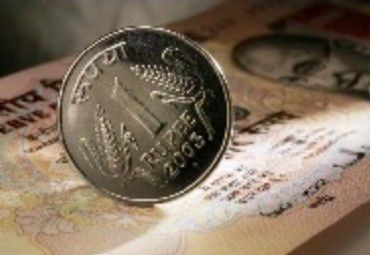 | « Back to article | Print this article |
Markets: India to lag behind its peers
We went for beer to celebrate India's victory over Pakistan in the World Cup cricket semi-finals on March 30.
A gentleman from Hoshiarpur (Punjab) made a smart forecast after India was through to the final.
He said: "Tomorrow, the Sensex will open up in the morning, move up 100 points, and then close 200 points lower, making an intra-day swing of 300 points."
What happened?
The Sensex indeed moved up nearly 100 points, then moved down intra-day 200 points lower than its previous close, and closed positive -- an intraday swing of 300 points.
Was it a known seasonality after the India-Pakistan match that I was unaware of? The forecast really made me think.
Click NEXT to read further. . .
Markets: India to lag behind its peers
Even from an Elliott perspective, this was one sub-minor forecast. I could not have known the anticipated swing till I was looking at 1-minute patterns from March-31 market opening.
Cricket from a Socionomics perspective is a positive sport, which again gives it a bullish bias.
Popularity of the sport in India keeps the multi-year outlook positive, but an intra-day swing forecast was like an astro forecast for me.
My curiosity took me to look at what happened to Dow Industrials on March 31, and guess what?
Even the Dow did the anticipated swing up 20 points in the day and down 40 points intra day, closing at day's low.
Click NEXT to read further. . .
Markets: India to lag behind its peers
It is ridiculous to think that Dow participants were also excited about the India-Pakistan match outcome and, hence, behaved in a similar fashion.
Believe me, this kind of forecasting has a high burnout rate.
One may think that connecting sports causes with Indian Sensex is insane, but how sane is connecting every news to how Sensex would do tomorrow.
We spend an undue time connecting cause with effect, while markets are still appreciating and digesting old news.
This information inefficiency is the reason we need more objective reasons to trade and invest.
One objective reason is performance.
It is not just Orpheus that insists on performance cyclicality but even value investing and behavioural finance talk about three-year worst loser's portfolio outperforming the three-year best winner's portfolio.
Click NEXT to read further. . .
Markets: India to lag behind its peers
The difference in what behavioural finance and value investing suggests and what we suggest with performance cyclicality is that, for us, cyclicality in performance happens at all degrees of time.
The investor just needs to know which holding period or risk profile he belongs to, a short one-week holding period or a longer three-year term.
We talked about Sensex underperforming Dow on January 24 (Sensex vs Dow).
We don't think that Sensex has underperformed against Dow just yet.
A six-month performance comparison of global indices versus India still places most Indian sector indices much higher among their global peers.
The maximum performance difference possible between two indices is 100.
Click NEXT to read further. . .
Markets: India to lag behind its peers
As one can see S&P 100 and French CAC are still 60 per cent lower in rankings compared to Nifty.
Italian MIB is almost 70 per cent lower than Nifty.
These performance differences become larger when we compare global indices with Indian sectoral indices.
BSE Capital Goods sector index is 80 per cent higher in performance than S&P 100 and 67 per cent higher than Dow.
According to this grid, there is a lot of catch-up India has to do still before it starts to outperform again.
Till then, expecting a relative outperformance just because of a World Cup win would be wishful thinking.
The author is CMT and, co-founder, Orpheus CAPITALS, a global alternative research firm





